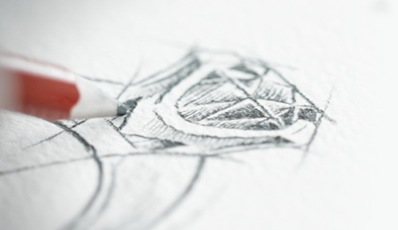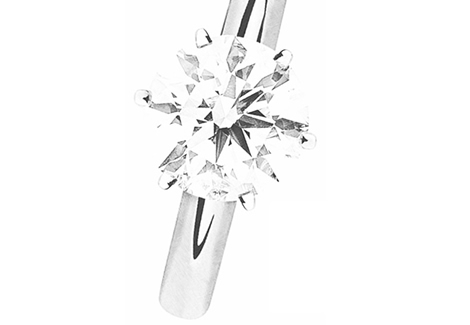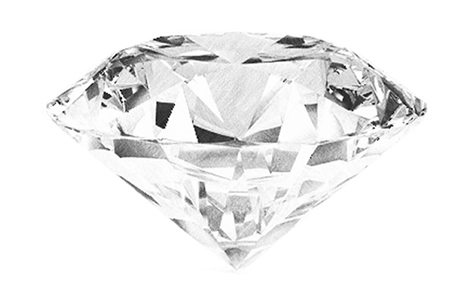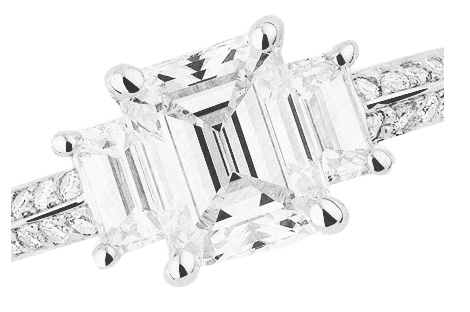THE FOUR C’S: AT A GLANCE

What makes a diamond special? Is it the Cut? Or maybe it’s the Carat size?
The Colour and Clarity? In fact, it’s all of them. All of these qualities work together to create the timeless and treasured pieces we create for you. And all four factors, known as The Four C’s, will help you see the difference between a dazzling diamond and a so-so stone.
Here’s a look at the criteria:
THE CUT
Of all the Four C’s, Cut has the greatest effect on a diamond’s beauty. The Cut is chosen by a skilled artisan – they use their knowledge and expertise to unlock a diamond’s potential to shine. Our craftsmen delicately design the Cut that will best transform a rough diamond into a sparkling stone.
There are many diamond shapes – including round brilliant, princess, and baguette – but what’s more important are proportions, symmetry and polish.
An accurately proportioned stone will display maximum brilliance, dispersion and fire.
Cut is the most difficult of the Four C's to grade, but has the greatest effect on the diamond's beauty. It comes down to personal preference - look at the diamond and determine the best combination of appearance and price.

The Clarity

A diamond’s Clarity rating has a direct effect on a diamond’s beauty and price. Truly flawless diamonds are extremely rare and priced accordingly. Almost all diamonds have tiny birthmarks called inclusions or blemishes, but most inclusions are not visible to the naked eye unless magnified.
Using the GIA Clarity Grading Scale, diamonds range from Flawless (F) to Included (I).
Inclusions which are not Visible to the naked eye range from Flawless (F) to Slightly Included 2 (SI2). This means that you are unable to see an inclusion in the diamond without the aid of a professional Jewellers Eye Loupe .
Inclusions which are visible to the naked eye range from Included 1 (I1) to Included 3 (I3). This means that you will be able to see some inclusions.
Grades above S12 are considered premium stones and, much like colourless diamonds, you will be paying for something that you can't see. However, if your budget allows, visit us in store so we can help you choose the purest possible stone.
The Colour
The Colour of a diamond is a true differentiator. A truly colourless diamond is a rarity, but you’ll find a wide range of beautiful stones that reflect a warm white to yellow shade. The best choice here is a matter of personal preference.
Most diamonds have at least a trace of yellow or brown body colour, however, the colour palette of a diamond is richly varied; diamonds can cover the entire spectrum of colours. Naturally coloured diamonds are rare and are referred to as fancies. These diamonds can come in tints such as green, intense yellow (canary), red, blue, pink, amber and even black. Because of their rarity, fancy colours are held in very high esteem, especially when there is intense colour saturation.
There are no hard and fast rules for what colour makes a diamond beautiful. However, diamonds are graded on a Colour scale established by the GIA, ranging from D (colourless) to Z.
The difference in Colour can be very subtle - and not necessarily visible to the untrained eye - but can affect the price dramatically. For example, you may not be able to tell the difference between a D and an F Colour, but the F is likely to be less expensive.

The Carat

Often confused with size, Diamond Carat is the standard used to measure diamond weight - a Carat equals 1/5 of a gram. As a diamond’s weight increases, its value does also.
However, Carat weight alone does not determine a diamond’s value. Two stones of equal weight can vary quite considerably in price because of quality differences.
In fact, a smaller diamond that returns more light to the eye, can actually be more beautiful than a larger stone with an inferior Cut, Clarity or Colour.
A one Carat solitaire will be more expensive than multiple stones totalling one Carat in weight - consider cluster and multi stone designs for a great value option.
